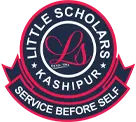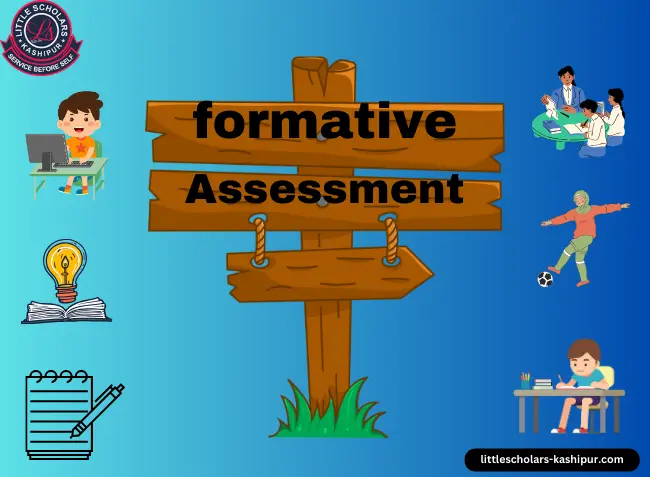Formative assessment is a dynamic and interactive approach to evaluating student learning. Unlike summative assessments, which evaluate student learning at the end of an instructional period, formative assessments are ongoing and provide continuous feedback that can be used to improve both teaching and learning. But why is formative assessment so crucial in today's educational landscape? Let's dive in and explore this essential educational tool.
History and Evolution of Formative Assessment
Early Concepts and Practices
Formative assessment has its roots in early educational practices where teachers would gauge student understanding through informal questioning and observations. These early methods laid the foundation for what we now recognize as formative assessment.
Modern Developments and Innovations
In recent decades, formative assessment has evolved significantly. With advancements in educational psychology and technology, the methods and tools for formative assessment have become more sophisticated, allowing for real-time feedback and personalized learning experiences.
Key Principles of Formative Assessment
Continuous Feedback
One of the cornerstones of formative assessment is the provision of continuous feedback. This ongoing dialogue between teacher and student helps identify areas of misunderstanding and allows for timely intervention.
Student Involvement
Engaging students in their own learning process is another critical principle. When students are involved in self-assessment and peer reviews, they become more aware of their learning goals and progress.
Adaptability and Flexibility
Formative assessment is not a one-size-fits-all approach. It requires teachers to be adaptable and flexible, tailoring their methods to the unique needs and learning styles of their students.
The Essential Guide to Jerome Bruner's Theory of Cognitive Development: Read now
Types of Formative Assessment
Observations
Teachers can gather valuable insights by observing students during class activities. These observations can inform future instruction and help identify students who may need additional support.
Discussions
Class discussions allow teachers to assess student understanding and encourage critical thinking. They also provide an opportunity for students to articulate their thoughts and engage with their peers.
Quizzes
Short, informal quizzes can be used to gauge student comprehension and retention of material. These quizzes provide immediate feedback and can highlight areas that need further review.
Peer Reviews
Peer reviews encourage students to evaluate each other’s work, fostering a collaborative learning environment. This process helps students develop critical thinking and self-assessment skills.
Self-Assessments
Self-assessments enable students to reflect on their learning and identify their strengths and areas for improvement. This practice promotes self-regulation and accountability.
Benefits of Formative Assessment
Enhances Student Learning
By providing continuous feedback, formative assessment helps students understand their progress and what they need to do to improve. This ongoing process supports deeper learning and retention.
Identifies Learning Gaps
Formative assessment helps teachers identify learning gaps early on, allowing for timely intervention. This proactive approach prevents small misunderstandings from becoming significant obstacles.
Promotes Self-Regulation
When students are involved in the assessment process, they develop self-regulation skills. They learn to set goals, monitor their progress, and adjust their strategies for better outcomes.
Encourages Teacher Reflection
Formative assessment also benefits teachers by encouraging them to reflect on their instructional methods. This reflection can lead to more effective teaching strategies and improved student outcomes.
Challenges in Implementing Formative Assessment
Time Constraints
One of the main challenges of formative assessment is the time required to implement it effectively. Teachers need time to create assessments, analyze data, and provide feedback, which can be challenging in a busy classroom environment.
Resource Limitations
Limited resources can also hinder the implementation of formative assessment. Schools may lack the necessary tools, technology, or training to support these practices.
Resistance to Change
Some educators and institutions may be resistant to change, preferring traditional methods of assessment. Overcoming this resistance requires professional development and a shift in mindset.
Strategies for Effective Formative Assessment
Incorporating Technology
Technology can streamline the formative assessment process, making it more efficient and effective. Digital tools and apps can facilitate real-time feedback and data analysis.
Collaborative Learning
Encouraging collaborative learning through group activities and peer assessments fosters a supportive learning environment. It also allows students to learn from each other’s perspectives.
Differentiated Instruction
Differentiated education adapts instructional strategies to each student's unique set of demands. Formative assessment data can inform these instructional strategies, ensuring that all students receive the support they need.
Regular Feedback Loops
Establishing regular feedback loops ensures that students receive continuous, actionable feedback. This ongoing communication helps keep students on track and motivated.
Role of Technology in Formative Assessment
Digital Tools and Apps
There are numerous digital tools and apps designed specifically for formative assessment. These tools can help teachers create interactive assessments, collect data, and provide immediate feedback.
Online Quizzes and Surveys
Online quizzes and surveys are convenient ways to assess student understanding. They can be quickly administered and automatically graded, saving time for teachers.
Learning Management Systems
Learning management systems (LMS) integrate various formative assessment tools and provide a centralized platform for managing assessments and tracking student progress.
Formative Assessment Techniques in Different Subjects
Language Arts
In language arts, formative assessment techniques might include peer editing, reading journals, and oral presentations. These methods help students develop their reading, writing, and speaking skills.
Mathematics
For mathematics, teachers might use problem-solving activities, math journals, and quick checks for understanding. These techniques help students build and demonstrate their mathematical thinking.
Science
In science classes, formative assessments can include lab reports, concept maps, and interactive simulations. These exercises promote critical thinking and experiential learning.
Social Studies
Social studies teachers might use debates, role-playing, and primary source analysis as formative assessment techniques. These methods help students engage with historical and contemporary issues.
Formative Assessment in Online Learning Environments
Virtual Classrooms
Formative assessment in virtual classrooms can include discussion boards, online quizzes, and digital portfolios. These tools help maintain engagement and provide feedback in a remote setting.
Interactive Platforms
Interactive platforms like Kahoot, Quizizz, and Google Classroom offer various formative assessment tools that make learning fun and interactive.
Real-Time Feedback
Real-time feedback in online learning environments is crucial. Tools like chat features, live polls, and instant messaging enable immediate communication between teachers and students.
Formative vs. Summative Assessment
Definitions and Differences
Formative assessment is an ongoing process that provides feedback during the learning process, while summative assessment evaluates student learning at the end of an instructional period. Both types of assessment play essential roles in education but serve different purposes.
Complementary Roles
Formative and summative assessments complement each other. Formative assessment guides instructional decisions and supports learning, while summative assessment provides a final evaluation of student achievement.
Master Blended Learning: Your Path to Success Begins Here!: Read now
Examples of Formative Assessment Practices
Exit Tickets
Exit tickets are brief prompts given at the end of a lesson. They provide quick insights into student understanding and can inform the next day’s instruction.
Think-Pair-Share
Think-Pair-Share is an interactive activity where students think about a question, discuss it with a partner, and then share their insights with the class. This technique promotes collaborative learning and critical thinking.
One-Minute Papers
One-minute papers are short, written reflections on a specific topic or question. They help students process what they have learned and provide teachers with immediate feedback on student understanding.
How to Create Effective Formative Assessments
Clear Objectives
Effective formative assessments start with clear objectives. Teachers need to know what they want to assess and how it aligns with learning goals.
Aligning with Learning Goals
Formative assessments should align with broader learning goals and standards. This alignment ensures that assessments are relevant and meaningful.
Engaging Activities
Engaging activities make formative assessments more enjoyable for students and can lead to more accurate assessments of their abilities and understanding.
Teacher's Role in Formative Assessment
Facilitator of Learning
Teachers act as facilitators of learning by guiding students through the assessment process and helping them understand their progress.
Feedback Provider
Providing timely and constructive feedback is one of the teacher’s most important roles in formative assessment. Students can better identify their areas of strength and growth with the help of this feedback.
Data Analyst
Teachers also act as data analysts, using assessment data to inform their instructional strategies and make data-driven decisions.
Future Trends in Formative Assessment
AI and Machine Learning
Artificial intelligence and machine learning are poised to revolutionize formative assessment by providing more personalized and adaptive learning experiences.
Gamification
Gamification adds elements of game design to learning activities, making formative assessment more engaging and motivating for students.
Personalized Learning Paths
Future trends in formative assessment include personalized learning paths that cater to each student's unique needs and preferences, ensuring a more individualized approach to education.
Conclusion
Formative assessment is a powerful tool that enhances learning and teaching by providing continuous feedback and promoting student engagement. By understanding its principles, benefits, and challenges, educators can effectively implement formative assessment practices in their classrooms, fostering a more dynamic and responsive learning environment.




